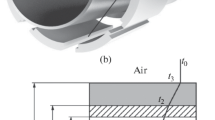A granular insulating crystalline glass material based on broken glass, clay and organic additives and a technology for its manufacturing are proposed. The regularities of the effect of the composition and firing temperature on the properties of the granules are specified. The granular heat-insulating material is produced following characteristics: its bulk density is 260–280 kg/m3, pellet strength – 1.74 MPa, thermal conductivity – 0.075 W/(m °C), and water absorption – 2.6 wt.%. The effect of the basic physical characteristics of the charge components on the pore formation process is studied. Using the research results, the basic parameters affecting the sustainability of the swelling glass are specified. A reasonable charge composition and a thermal and gas synthesis mode are chosen for the partial gas pressure to be lower than the surface tension of the melt. This enables the formation of granules with small closed pores and vitrified surfaces. The data obtained could be applied in heat insulation of the main pipelines with foamed glass ceramics.
Similar content being viewed by others
References
Building Regulations SNiP 2.04.14-88: Thermal Insulation of Equipment and Pipelines [in Russian], (1988).
Building Regulations SNiP 2.04.07-86: Heating Network [in Russian], (1986).
Methodological Guidelines for Compilation of Energy Characteristics for Systems of Thermal Energy Transport, SPO ORGRES, Moscow (1999).
A. S. Apkaryan and S. N. Kulkov, Inorg. Mater.: Appl. Res., 9, No. 2, 286 (2018).
A. S. Apkaryan and V. G. Hristyukov, RF Patent 2374191 (November 27, 2009).
A. S. Apkaryan, S. N. Kulkov, and V. G. Hristyukov, Glass Ceramics. Composite Granular Insulating Glass-Ceramic Material. Part 1 [in Russian], TUSUR, Tomsk (2019).
A. U. Franchuk, Tables of Thermal Performance of Building Materials [in Russian], Res. Inst. Build. Phys., Moscow (1969).
W. Blasi, Bauphysik, Verlag Europa Lehrmittel. Nourney. Vollmer GmbH & Co. (2001).
S. Z. Sapozhnikov and E. L. Kitanin, Technical Thermodynamics [in Russian], St. Petersburg STU, St. Petersburg (1999).
Building Regulations SNiP 41032003: Thermal Insulation of Equipment and Pipelines (2004).
Author information
Authors and Affiliations
Corresponding author
Rights and permissions
Springer Nature or its licensor (e.g. a society or other partner) holds exclusive rights to this article under a publishing agreement with the author(s) or other rightsholder(s); author self-archiving of the accepted manuscript version of this article is solely governed by the terms of such publishing agreement and applicable law.
About this article
Cite this article
Apkaryan, A.S., Khomyakov, A.Y. A Study of Thermophysical Properties of a Glass-Ceramic Material Modified with Low-Melting and Organic Additives for Thermal Insulation of Pipelines. Russ Phys J 66, 124–130 (2023). https://doi.org/10.1007/s11182-023-02919-y
Published:
Issue Date:
DOI: https://doi.org/10.1007/s11182-023-02919-y




